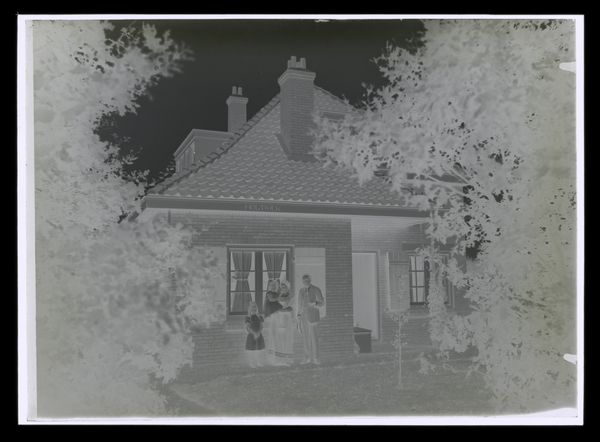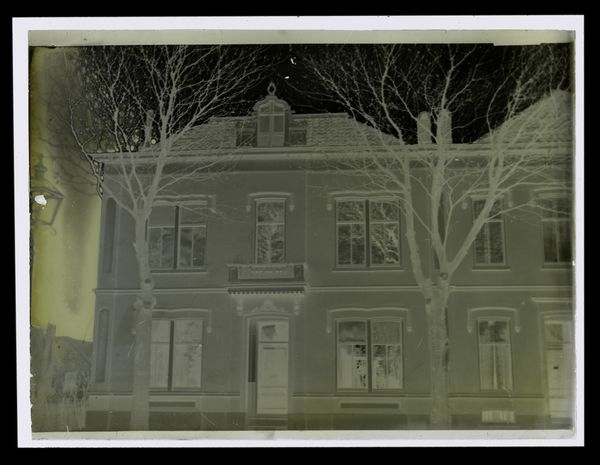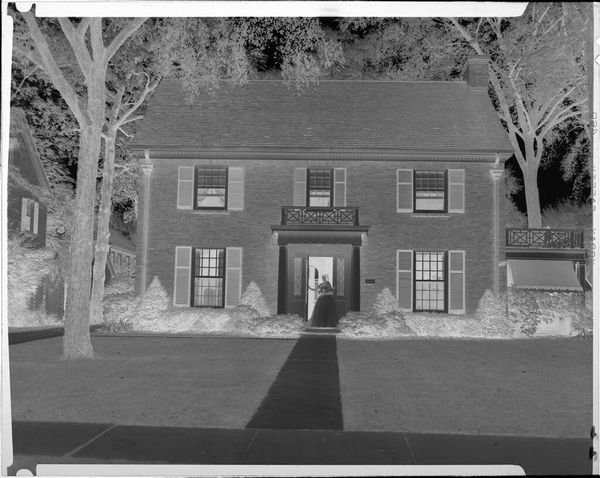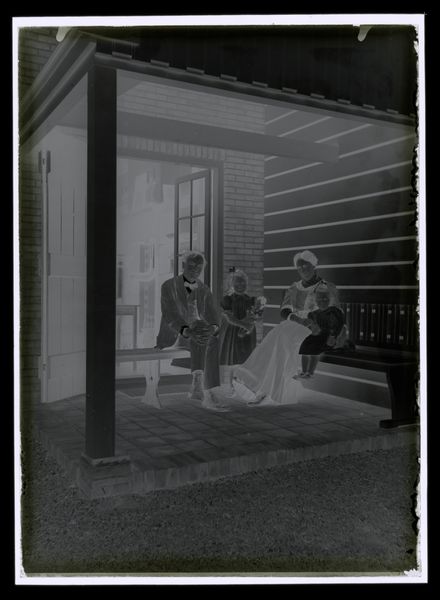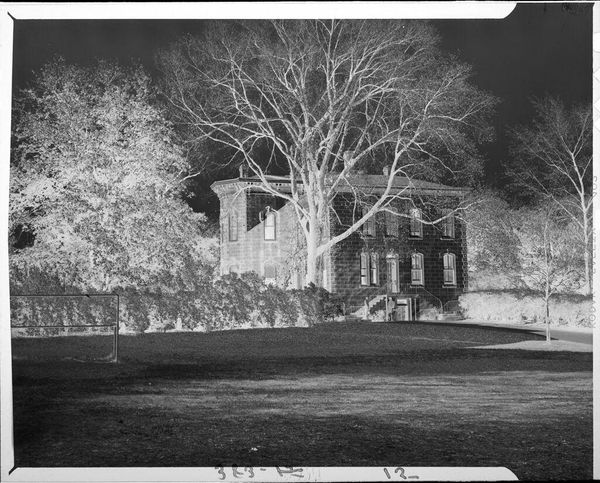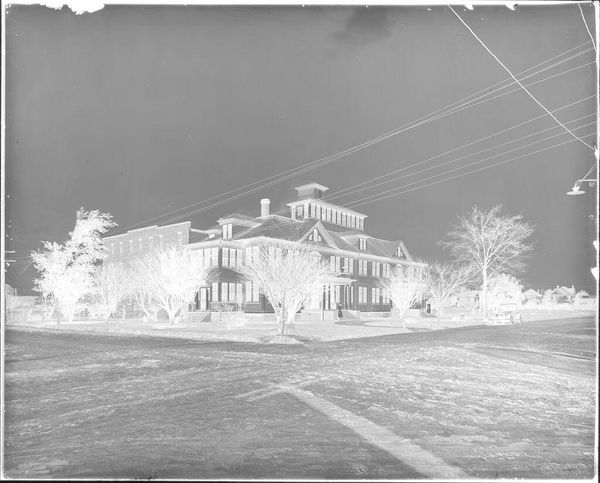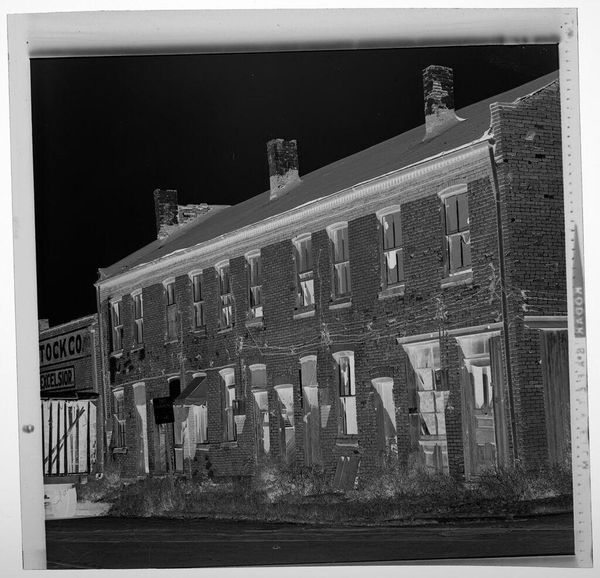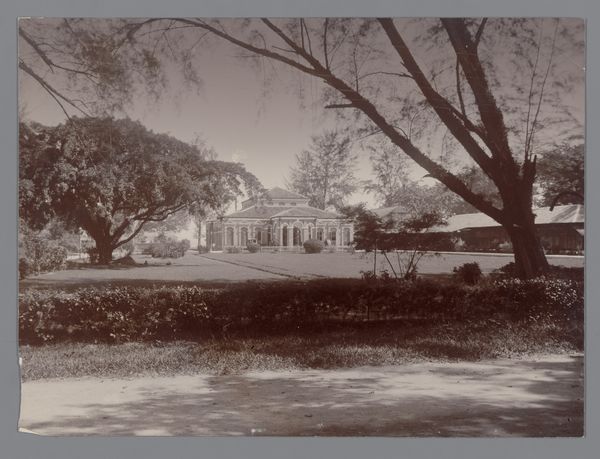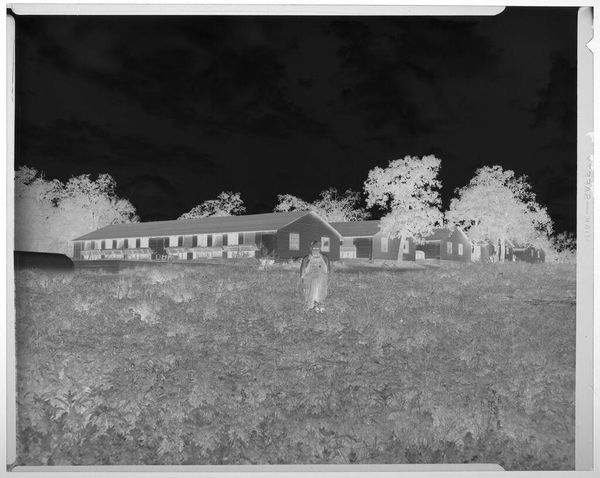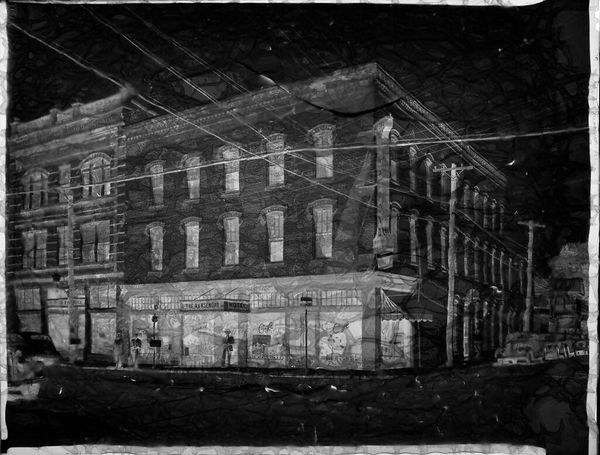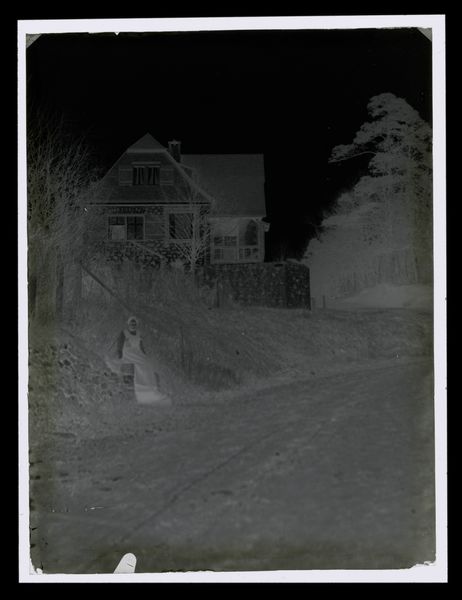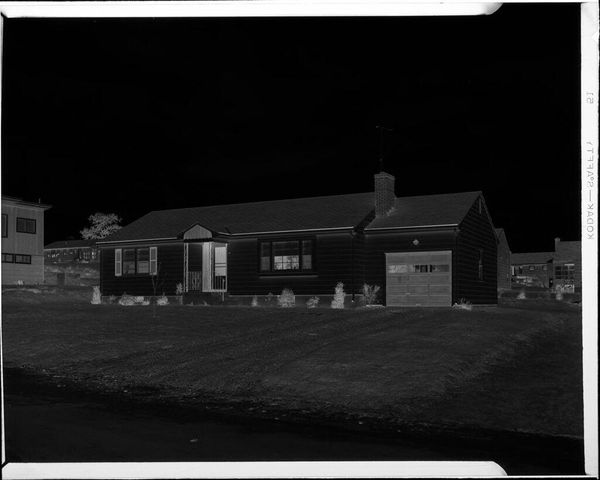
photography, gelatin-silver-print
#
portrait
#
black and white photography
#
landscape
#
photography
#
gelatin-silver-print
#
realism
Dimensions: height 130 mm, width 180 mm
Copyright: Rijks Museum: Open Domain
Curator: What strikes me first about Laurens Lodewijk Kleijn's photograph, "Logement in Nederland," created sometime between 1873 and 1900, is its ghostly, almost dreamlike quality, enhanced by the gelatin-silver print medium. It feels like peering into a forgotten past. Editor: Absolutely. It's a stark and rather arresting image. I see the almost blinding effect and instantly consider it representing that late nineteenth-century concept of "progress" that so characterized much of the period in terms of a brighter future that at once could both promise and threaten depending on which communities one belonged to in the time. Curator: That’s interesting. The architecture, that grand house, looms in the background, suggesting stability and prosperity. But then you have these figures, frozen in time, positioned lower and somewhat removed in the space, which gives this whole image the potential for a deeper, contrasting reading. I agree on your consideration of social space as key to our analysis. Editor: Precisely. Look closer; you'll notice repeated numerical motifs -- sets of two or three -- such as in the paired figures that occupy that space in the bottom part of the piece. While perhaps unintentionally situated, those forms trigger readings associated with everything from legalities to family structures within cultures dependent on familial networks. I bet a cultural psychologist might see that image differently than a Freudian practitioner though! Curator: The "black and white" realism contributes to that detached, objective feeling, yet also heightens the visual impact of those figures. As photography developed, images of regular citizens and scenes helped push political causes through popular print culture. I find this an under explored idea when considering this period in photography. Editor: Yes! That frozen state heightens their symbolical importance. These kinds of depictions create symbolic touchstones. In this way, a photographic image serves as a signifier loaded with cultural memory about people's understanding of home. We can analyze and discuss whether these signifiers change their core references over time due to socioeconomic reasons, political climate, or anything else relevant to their era of production as well as each later viewer of such photography. Curator: It’s a compelling juxtaposition, really. The seeming permanence of the building versus the transience of the people outside it. This reminds us that photography during the rise of modernization could, perhaps even unconsciously, create images where its original function may later be superseded by unintended sociopolitical readings based on those factors. Editor: Agreed. It allows one to reframe this photograph, shifting from one tied solely to an understanding of "dwelling" towards this potent visual commentary related to culture itself -- of families, of history, of memory! I hadn't quite framed my perception of the image this way prior to this little journey with you!
Comments
No comments
Be the first to comment and join the conversation on the ultimate creative platform.
